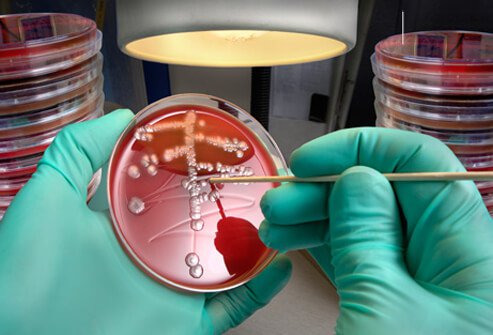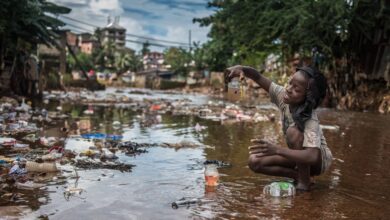
When we think of bacteria we often associate them with dirt and diseases. However there is good bacteria that is helpful in the body especially during the processes of the digestive system. There are certain types of bacteria that are good for the body. There are also harmful bacteria that cause diseases. Pathogenic bacteria release endotoxins and exotoxins which are poisonous substances that cause symptoms in diseases. Below are 7 dangerous diseases caused by bacteria.
1. Flesh eating disease
Flesh eating disease is scientifically known as Necrotizing fasciitis. It is a serious infection most often caused by Streptococcus pyogenes bacteria. S. pyogenes are cocci shaped bacteria. These that typically colonize the skin and throat areas producing toxins that destroy body cells, specifically red blood cells and white blood cells.
2. Staph Infection
Methicillin-resistant Staphylococcus aureus (MRSA) are bacteria that can cause serious health issues. MRSA is spread through physical contact such as through a cut for. MRSA is most commonly acquired as a result of hospital stays.
3. Meningitis
Meningitis is an inflammation of the protective covering of the brain and spinal cord, known as the meninges. This infection can lead to brain damage and even death. Symptoms of meningitis include a severe headache, neck stiffness and high fever. Meningitis is treated with antibiotics.
4. Pneumonia
Pneumonia is an infection of the lungs. Symptoms include a high fever, coughing, and difficulty breathing. While a number of bacteria can cause pneumonia, the most common cause is Streptococcus pneumoniae. S. pneumoniae typically reside in the respiratory tract and don’t normally cause infection in healthy individuals. In some cases, the bacteria become pathogenic and cause pneumonia. The infection typically begins after the bacteria are inhaled and reproduce at a rapid rate in the lungs. S. pneumoniae can also cause ear infections, sinus infections, and meningitis. If needed, most pneumonia has a high probability of cure with antibiotic treatment. A pneumococcal vaccine can help prevent those who are most at risk from developing this disease. Streptococcus pneumoniae are cocci shaped bacteria.
5. Tuberculosis
Tuberculosis (TB) is an infectious disease of the lungs caused by bacteria called Mycobacterium tuberculosis. Tuberculosis can be deadly without proper treatment. TB is airborne and in developing countries it has become associated with HIV.
6. Cholera
Cholera is an intestinal infection caused by the bacteria Vibrio cholerae. It is a food-borne disease spread by contaminated food and water. Globally there are approximately 3 to 5 million cases per year. Approximately 100,000 deaths occur out those cases. Most instances of infection occur in areas with poor water and food sanitation. Cholera leads to dehydration or in worse cases death.
7. Dysentery
Dysentery like cholera is spread by contaminated food and water. Bacillary dysentery is an intestinal inflammation caused by bacteria in the genus Shigella. Dysentery is also spread by individuals who do not wash their hands after using the toilet. Dysentery symptoms can range from mild to severe. Severe symptoms include bloody diarrhea, high fever, and pain. Individuals suffering from dysentery need antibiotics and to rehydrate.




